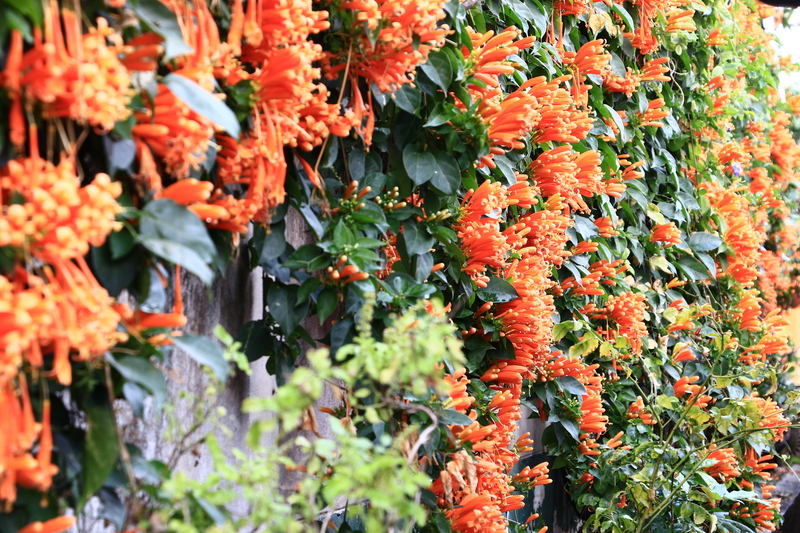Harnessing Waste to Cultivate Nourishing Soil
Posted on 30/05/2025
Harnessing Waste to Cultivate Nourishing Soil
In today's eco-conscious world, turning waste into wealth has become increasingly important. One of the most effective ways to promote sustainability is by harnessing waste to cultivate nourishing soil. Not only does this practice reduce landfill waste, but it also enriches soil quality, fosters healthier plants, and contributes to a more circular, regenerative ecosystem. This comprehensive guide delves into how you can transform everyday waste into fertile, productive soil, discussing the scientific principles, practical techniques, and numerous benefits of this eco-friendly approach.
The Importance of Soil Health
Healthy soil is the foundation of a thriving ecosystem and productive agriculture. Soil health determines plant vigor, nutrient cycling, water retention, and carbon sequestration. However, excessive use of chemical fertilizers and the loss of organic matter have degraded soils worldwide. By recycling organic waste into the ground, we can rejuvenate our agricultural landscapes and gardens, maximizing yields while protecting the environment.

What Does It Mean to Harness Waste?
Harnessing waste refers to the process of utilizing discarded organic materials--such as food scraps, garden trimmings, paper, or manure--to enhance soil fertility and structure. Instead of sending this biodegradable waste to landfills where it produces methane, we can repurpose it into nutrient-rich compost or other soil amendments. This practice forms the basis of sustainable, regenerative agriculture and home gardening.
Why Focus on Organic Waste?
- Organic waste is abundant. Households, restaurants, and farms produce tons of organic matter daily.
- Biodegradable and easily processed. Organic waste breaks down naturally and can be composted without industrial intervention.
- Reduces environmental impact. Repurposing organic waste cuts down landfill usage and greenhouse gas generation.
Transforming Waste into Fertile Soil: Key Principles
To cultivate nourishing soil from waste, it's essential to understand the fundamental processes involved:
- Decomposition: Microorganisms break down complex organic materials into simpler substances.
- Mineralization: Nutrients like nitrogen, phosphorus, and potassium become available for plant uptake.
- Humification: Stable organic compounds such as humus are formed, improving soil texture and water retention.
These processes occur naturally but can be accelerated and controlled through proper composting techniques and waste management strategies.
Effective Methods for Harnessing Waste
1. Traditional Composting
Composting remains the most popular and accessible method for converting kitchen and yard waste into nourishing soil amendments. This process involves layering green materials (rich in nitrogen) and brown materials (rich in carbon), maintaining moisture, and occasionally turning the pile to aerate it. Common compostable items include:
- Vegetable and fruit scraps
- Coffee grounds and tea bags
- Eggshells
- Grass clippings and leaves
- Shredded paper and cardboard (avoid glossy prints)
Tips for successful composting:
- Balance carbon to nitrogen ratio (about 30:1)
- Keep the pile moist, but not soggy
- Turn regularly to provide oxygen
- Avoid meat, dairy, and oily foods, which attract pests
2. Vermiculture (Worm Composting)
Vermiculture, or worm composting, employs red wiggler worms to consume organic waste and produce nutrient-dense castings--an excellent organic fertilizer for your garden. This method is ideal for small spaces and can be conducted indoors.
- Set up a worm bin with bedding materials (shredded cardboard, paper, or coconut coir).
- Add food scraps in moderation, avoiding acidic or oily foods.
- Harvest worm castings after several months to enrich your soil or potted plants.
3. Bokashi Fermentation
The Bokashi method uses specialized microbes to ferment organic waste in an anaerobic environment. Unlike traditional composting, Bokashi accommodates a wider range of waste, including small amounts of meat, dairy, and cooked food. The resulting pre-compost can be buried to quickly decompose and nourish your garden beds.
4. Sheet Mulching (Lasagna Gardening)
Sheet mulching is a low-labor approach for harnessing yard waste to develop rich, healthy soil directly in your garden beds. This involves layering cardboard/newspaper, green material, brown material, and soil. Over time, the organic layers break down, suppressing weeds and building fertile topsoil.
5. Biochar Enrichment
Biochar, a type of charcoal made by heating organic waste in a low-oxygen environment, can significantly boost soil fertility. It improves soil texture, increases water retention, and provides a habitat for beneficial microbes. To maximize its benefits, mix biochar with compost before applying it to soil.
Benefits of Harnessing Waste for Soil Enrichment
*
- Reduces Landfill Waste--Composting and other waste-conversion methods divert significant volumes of organic material from landfills, mitigating methane emissions and conserving landfill space.
- Improves Soil Fertility--Compost and other natural amendments are rich in vital nutrients, feeding plants and promoting strong root development.
- Enhances Soil Structure and Water Retention--Organic matter added to soil boosts aeration, moisture retention, and resistance to erosion.
- Encourages Beneficial Microbes--Natural decomposition encourages healthy microbial communities, which protect plants from disease and aid nutrient uptake.
- Reduces Chemical Dependency--With improved soil health, there's much less need for synthetic fertilizers and pesticides.
- Closes the Nutrient Loop--By returning waste to the soil, nutrients are recycled continually, fostering a more regenerative, sustainable ecosystem.
The Science Behind Soil Nourishment from Waste
Turning waste into nourishing soil is backed by centuries of agricultural science. Here's how the process works:
- Organic Matter Breakdown: Microbes, fungi, and invertebrates break down organic matter into humus--an essential component of fertile soil.
- Nutrient Release: As waste decomposes, vital nutrients like nitrogen, phosphorus, and potassium are released in plant-available forms.
- Soil pH and Structure: The gradual breakdown of organic waste naturally balances soil pH and enhances its crumb structure, promoting strong plant growth and resilience.
- Microbial Activity: A steady influx of organic matter feeds soil-dwelling organisms--earthworms, mycorrhizal fungi, and bacteria--that form the backbone of the soil food web.
Common Challenges & How to Overcome Them
1. Odor Problems
A well-maintained compost pile shouldn't smell. Foul odors suggest too much moisture, poor aeration, or an excess of nitrogen-rich material. Always balance your greens with browns and turn your pile regularly to maintain airflow.
2. Attracting Pests
Meat, dairy, and oily foods can attract rodents and animals. Stick to plant-based scraps, bury your compost, or use sealed composting bins to keep pests at bay.
3. Slow Decomposition
If your compost isn't breaking down, it's often due to an improper balance of materials, lack of moisture, or insufficient aeration. Shred larger pieces, add water if too dry, and ensure your bin gets plenty of oxygen.
4. Space Constraints
Urban dwellers can use worm bins, Bokashi buckets, or join community composting programs. Even small spaces offer ways to effectively harness waste to cultivate nourishing soil.
Urban & Community Approaches
City dwellers face unique challenges, but also have access to innovative solutions such as:
- Community Composting Initiatives: Neighborhood groups or local governments often manage communal composting sites. Residents deliver food scraps and can claim finished compost for personal use.
- Curbside Organic Collection: Some cities offer organic waste pickup, processing the material into commercial compost or biogas.
- Vertical and Indoor Composting: Countertop composters and worm bins make it possible to process organic waste even in apartments.
Best Practices for Home Waste-to-Soil Systems
- Start small: Begin with a manageable amount--kitchen scraps or a small worm bin.
- Observe and adjust: Monitor your compost for moisture, temperature, and pests. Adjust as needed to keep the system healthy.
- Diversify waste inputs: A wider range of organic material fosters a balanced, nutrient-rich finished product.
- Avoid plastics and toxic residues: Only compost uncontaminated, biodegradable materials.
- Use the compost timely: Apply mature compost to garden beds, around trees, or in potting soil to maximize its soil-rejuvenating benefits.
Environmental and Economic Impact
*Harnessing waste for soil cultivation saves money by reducing fertilizer and landfill costs.* It also conserves energy used in hauling and processing waste, preserving natural resources for future generations. On a larger scale, widespread adoption of these practices could significantly reduce greenhouse gas emissions and restore degraded landscapes worldwide.

Future Innovations in Waste-to-Soil Technology
Emerging technologies are making it easier and more efficient to implement waste-to-soil solutions. Some exciting advancements include:
- Smart composters: Automated bins that control temperature, airflow, and moisture, speeding up the composting process even indoors.
- Microbial and fungal inoculants: Special blends of beneficial organisms that enhance decomposition and nutrient cycling.
- AI-powered waste sorting: Advanced sorting systems for municipal composting facilities, improving feedstock quality and reducing contamination.
- Decentralized compost hubs: Neighbourhood-level facilities processing waste locally and returning finished compost to residents.
Conclusion: Building a Sustainable, Regenerative Future
Harnessing waste to cultivate nourishing soil is a transformative practice that empowers individuals and communities to turn today's waste into tomorrow's abundance. From simple backyard compost piles to cutting-edge urban composting solutions, everyone can participate in closing the nutrient loop and restoring soil health. By embracing these methods, we move closer to a world where every scrap is a resource, every garden is thriving, and every community is committed to the well-being of both planet and people.
Start small, but dream big: your journey to enriching the earth begins with what you throw away today.
Further Reading
Keywords (for SEO optimization): waste to soil, cultivating nourishing soil, harnessing waste, composting, soil enrichment, organic waste recycling, garden soil health, sustainable soil practices

